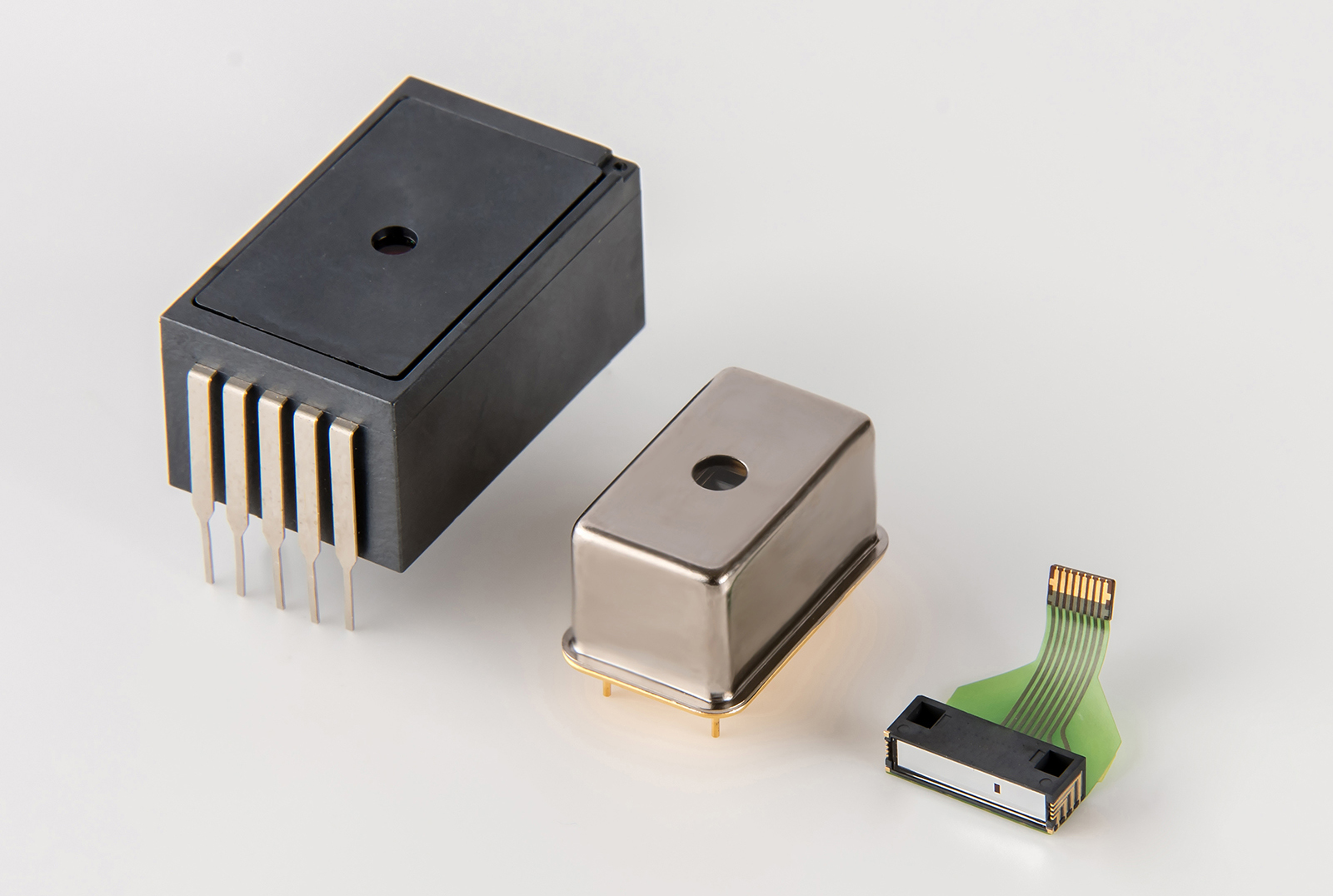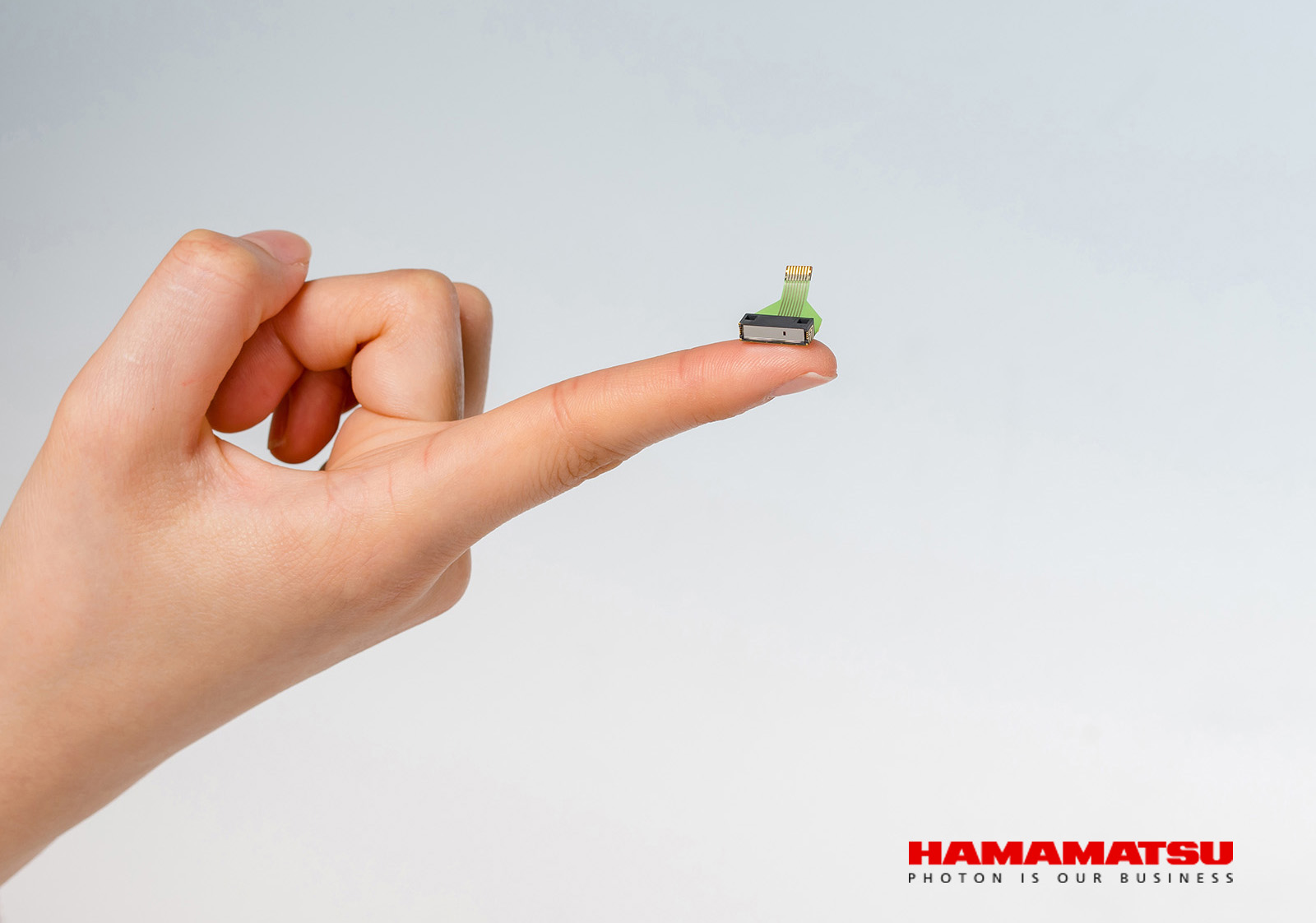Fits on a fingertip
World's Smallest Grating Type Spectrometer
is Expanding the Future of Spectrophotometry
Spectrophotometry, which examines the light spectrum emitted or absorbed by materials and
analyzes
their
composition, is used in a wide variety of fields including food, agriculture and medicine. Up
until
now,
spectrophotometry was typically performed in a chemical laboratory using large benchtop
spectrometers.
This SMD series spectrometer is expected to be used in hand-held instruments with limitations to
their
size or weight, simultaneous multipoint measurements, and other applications.
The most distinctive feature of the SMD series is that while the volume has been reduced 40 to 1 and the weight
30 to 1 as compared to the previous mini-spectrometer MS series, the sensitivity in the near infrared region has
been increased about 50 times by employing the latest high sensitivity image sensor.
This makes it easier to mount the device in portable spectrophotometers, quadcopters and drones, with size and
weight limitations.
It also allows the device to be used in various other applications such as making
multipoint
measurements by using several units of this device in parallel and making observations by attaching the device
directly to a living body.
Moreover, because this spectrometer combines a grating and an image sensor, it
can
acquire changes in the light intensity for each wavelength as continuous data to be used in more advanced
analysis methods.
Furthermore, a flexible cable connection has been employed to improve the usability of the device whilst also
offering high levels of freedom in mountability.
Suitable for food, agricultural, medical and pharmaceutical applications
In recent years, there has been a growing global concern for safety and productivity in the food and agriculture
fields and there are high expectations for spectrophotometry, which is an easy and efficient inspection method.
The SMD series provides high sensitivity to near infrared light in the range of 640 nm to 1,050 nm, which allows
measurements of moisture, sugar, organic acids and other components derived from organisms. This makes them
suitable not just for food and agricultural applications, but for many other fields and applications such as
medical and pharmaceutical.

Sophisticated technologies made the ultra-compact sensor size possible:
Size comparison of the
new
micro‑spectrometer with former mini‑spectrometer

